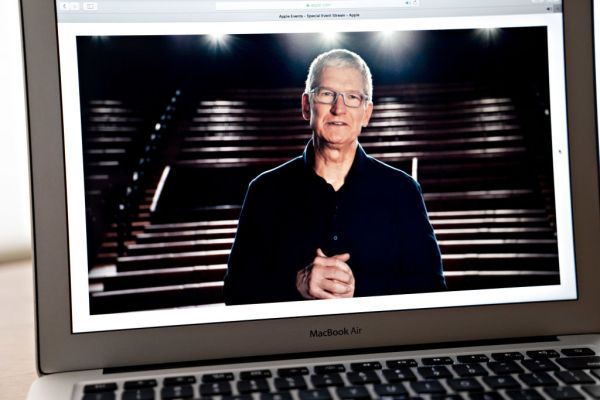In a preshow post, I compared the upcoming virtual WWDC to late-season “M*A*S*H.” If you watched the show during its original run or have since binged it on Netflix or Hulu, you’re likely aware of the producers’ uncomfortable transition away from using a laugh track. It was an ultimately beneficial choice in a show about a mobile military hospital during the Korean War, but shifting viewer expectations wasn’t easy, so it was done gradually, over time.
After so many years of priming audiences for a large online spectacle, event teams haven’t had the same luxury. Some shifted online last minute and others simply canceled the shows altogether. Even though COVID-19 was looming for months, there was really no simple decision here, and as such many of these first-time virtual-only events have been uncomfortably awkward and primarily defined by what they’re not.
Microsoft made a valiant attempt to embrace the temporarily new normal with its recent Build conference. The result was, at best, a mixed bag, relying on cringe-inducing banter by two employees to anchor several days of developer events. Where the presentation most shined, however, was when it was at its most simplistic: Satya Nadella stood in front of a bookshelf to address the weirdness of the situation and moved on with the day’s news. It was one of those moments where you found yourself grateful that the CEO is the emotional opposite of his screaming predecessor.
One could simply ignore the strangeness of it all — the absence of a live audience packed with a cheering section full of developers and employees. But to do so would be doing it a disservice.
The truth is — for better and worse (though that’s a topic for another day) — for many, corporate tech CEOs have become key thought leaders in terms of political and social issues. We’ve come to expect public statements addressing the manner of global unrest that has seemingly become a daily occurrence in 2020.
At yesterday’s WWDC keynote, Apple didn’t shy away from the pandemic. Instead, the company artfully embraced the uncanny experience. As expected, the prerecorded address was set in Steve Jobs Theater, the underground stage at Apple HQ that has housed several of the company’s recent events. It’s a much more intimate space than WWDC’s usual home at San Jose’s McEnery Convention Center, designed with the minute level of detail one might expect from an Apple-funded architectural project.
The event jumped to different spots in the building as Apple executives took turns running down announcements in different categories. Cook started the show on stage, per usual, with one key difference. He walked out from backstage and turned away from the audience, backdropped by softly lit seating. It was a surprising, but masterful stroke, putting the pandemic at centerstage as it opened.
A stool was waiting for Cook. After a few words, he took a seat to address the elephants in the room: first COVID-19, then the police killing of George Floyd and subsequent protests that have shaken much of the world. I’m not entirely certain that there’s an elegant way to shoehorn those topics into a press conference about API developments, but Apple’s measured response was about as good as you could imagine such a thing being.
From there, Apple was off to the races. Smooth transitions, tight drone shots, some tasteful effects. The WWDC keynote was a bit of a masterclass in what a press conference looks like with some real production values. Turns out there are some fringe benefits to being one of the three most valuable companies in the world.
There were still some first-time issues. While the lead time gave Apple ample opportunity to polish the thing to high heaven, ultimately I think there were some pacing problems.
This may just be the liveblogger in me talking, but the lack of the standard live stage transitions and product demos meant none of the announcements had any time to breathe. It’s a fairly minor issue, in the grand scheme of things. I’ve been to my fair share of live events with similar pacing problems — Sony’s CES press conferences spring immediately to mind. Even without a new format, it can be difficult to strike the balance between offering up information and moving along at an engaging pace.
In any case, Apple’s is the first of these virtual events I’ve followed closely that’s really felt like the future of these sort of press conferences. From the standpoint of delivering news to a wide audience, a well polished prerecorded event is perfectly acceptable — and perhaps even preferable in certain regards. I’ve been to a lot of these in-person events, and know full well what we lose by not attending: There are tangible product demos, in-person, meetings and networking.
Certainly it felt strange spending the morning of Apple Day taking a brisk walk around my neighborhood and settling in front of my home computer. There was no press waiting area, no CalTrain ride to downtown San Jose, no danishes. But like the death of the laugh track, the weirdness goes away eventually. If this does, indeed, become the new normal, we’ll settle in soon enough. We always do. And we’re eventually left wondering how we ever did it the old way to begin with.

